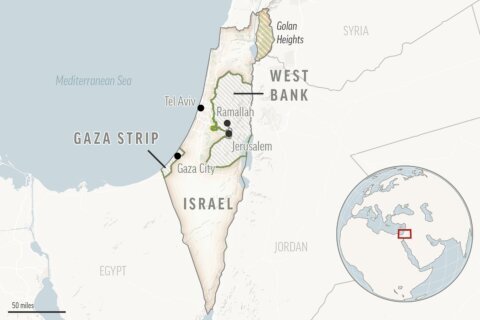NEW DELHI (AP) — India’s Prime Minister Narendra Modi and Chinese President Xi Jinping met Wednesday on the sidelines of the BRICS summit in Russia, in their first bilateral meeting in five years.
The meeting came days after the two giant neighbors announced a border accord aimed at ending a four-year-old standoff involving tens of thousands of their soldiers in mountainous Ladakh, India’s foreign ministry said.
Xi and Modi shook hands against a backdrop featuring their national flags, and both stressed the importance of handling their disputes.
The Chinese leader said the two countries were at a crucial stage of development and “should carefully handle differences and disagreements and facilitate each other’s pursuit of development aspirations.”
“It’s important for both sides to shoulder our international responsibilities, set an example for boosting the strength and unity of the developing countries, and contribute to promoting multi-polarization and democracy in international relations,” Xi said.
“The two leaders affirmed that stable, predictable, and amicable bilateral relations between India and China, as two neighbors and the two largest nations on earth, will have a positive impact on regional and global peace and prosperity,” India’s Foreign Secretary Vikram Misri told reporters after the meeting.
India announced on Monday that the two countries agreed to a pact on the resumption of military patrols along their disputed border in the Himalayas after a standoff that began with a deadly clash in 2020.
China confirmed the agreement a day later, saying the two sides had reached resolutions related to their border.
“China will work with India to implement these resolutions properly,” Lin Jian, China’s Foreign Ministry spokesperson, said Tuesday.
Misri said the border accord should certainly ease the situation along the disputed territory.
The two leaders last met for a summit in southern India in October 2019, months before the army face-off started on their disputed border. The pair has not held any formal bilateral meetings since. Chinese President Xi did not attend the G-20 summit of leading economies and developing countries, which India hosted in New Delhi last year.
Ties between the two countries deteriorated in July 2020 after a military clash killed at least 20 Indian soldiers and four Chinese. That turned into a long-running standoff in the rugged mountainous area, where each side has stationed tens of thousands of military personnel backed by artillery, tanks and fighter jets.
Misri said the pact would lead to the “disengagement” of troops at the Line of Actual Control, the long Himalayan border shared by the two Asian giants. Misri did not specify whether it means the withdrawal of the tens of thousands of additional troops stationed by the two countries along their disputed border in the northern Ladakh region after their armies clashed in 2020.
Both India and China have withdrawn troops from face-off sites on the northern and southern banks of Pangong Tso, Gogra and Galwan Valley, but they continued to maintain extra troops at Demchok and Depsang Plains.
The two sides have deployed troops in the forward areas of Ladakh for a fifth consecutive winter in freezing temperatures.
The Line of Actual Control separates Chinese and Indian-held territories from Ladakh in the west to India’s eastern state of Arunachal Pradesh, which China claims in its entirety. India and China fought a deadly war over the border in 1962.
The army standoff damaged business ties between the two nations with halted investments from Chinese firms and major projects banned. India also banned Chinese-owned apps, including TikTok, which is operated by Chinese internet firm Bytedance. It cited privacy concerns that it said threatened India’s sovereignty and security.
Chinese products are ubiquitous in India, from toys to smartphones to made-in-China Hindu idols. According to Indian government data, two-way trade grew from $3 billion in 2000 to $95 billion in 2018, with the balance strongly favoring China.
In 2022, India’s trade with China increased by 8.47% yearly to reach $136.26 billion.
Copyright © 2025 The Associated Press. All rights reserved. This material may not be published, broadcast, written or redistributed.







